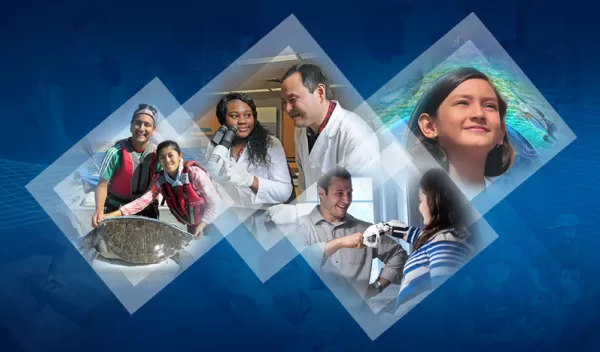
NSF announces name changes to education directorate
WASHINGTON – The U.S. National Science Foundation today announced changes to the names of the Directorate for Education and Human Resources and the Division of Human Resource Development. To more accurately reflect and communicate the values and totality of the agency’s work with STEM education including supporting the missing millions — Americans from every background, in each state, who have the potential to participate in STEM — the directorate will now be known as the Directorate for STEM Education, or EDU, and the division will be known as the Division of Equity for Excellence in STEM, or EES.
"We are at an important moment as a nation, where we are witnessing the amazing impact that STEM disciplines can have in our lives and communities every day. As the largest investor in STEM talent in the federal government, the new name for the directorate responsible for inspiring and unleashing talent across our nation should represent the work that NSF has been doing for decades and into the future. It is important to communicate the impact and potential to our taxpayers and the public so that they can understand and appreciate our work in these areas," said NSF Director Sethuraman Panchanathan. "STEM education research and practice leads to the design and implementation of new knowledge and skills critical for training the next generation of scientists, engineers, educators, and the technical workforce. That is why NSF is strongly committed to investing in the development of ideas and people. This is how our nation will remain in the vanguard of scientific progress and technological innovation."
For more than three decades, a major part of NSF's education and STEM workforce portfolio have been primarily housed in what will now be known as EDU. Annually, it makes significant investments in basic, applied, and translational research that enables improvements in STEM teaching, learning, training, and assessment. The results from EDU's investments are used to inform STEM education discovery, innovation, and knowledge translation and sharing at all education levels and learning settings. In addition to building and enhancing STEM education and research infrastructures at minority-serving institutions, EDU also supports fellowships, scholarships, and the creation of alliances, centers, and partnerships aimed at increasing accessibility, integration, and adaptability across the STEM enterprise. And more than ever, NSF is witnessing the amazing impact STEM disciplines can have in the lives of communities, including in under-served and under-resourced areas of the country.
EES will continue to serve as a focal point for NSF's agency-wide commitment to broadening participation of groups historically underrepresented in STEM by enhancing the quality and excellence of STEM education and research opportunities. EES's dedication to sponsoring programs for broadening participation in STEM and conducting research on how to support a more inclusive, accessible, and diverse STEM enterprise are vital for sustaining national prosperity. The new name better reflects the mission, activities and portfolio of the division.
NSF remains committed to continuing to expand and create opportunities across the country, at all levels of education and learning settings, that open new doors to STEM for the nation's students and advance the equity and quality of STEM education everywhere.
"It's a great opportunity to serve as the new assistant director of EDU during this exciting time," said James L. Moore III. "Access to quality STEM education is a national imperative. For decades this directorate has been leading the charge in developing critical strategies to advance STEM learning and create opportunities everywhere. And finally, EDU and EES have names that more clearly reflect their missions, and I'm proud to lead this new change."
All name changes are effective immediately and do not affect the work done by EDU. For updates and announcements related to EDU programs, please visit nsf.gov.


